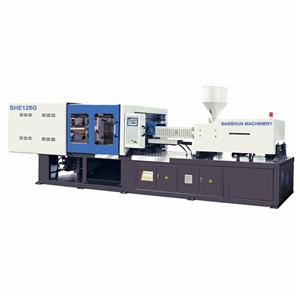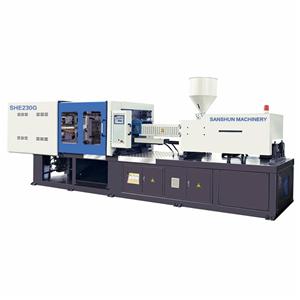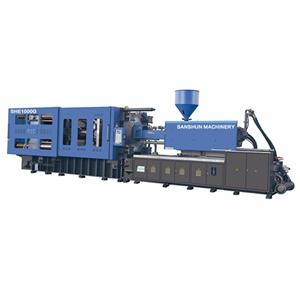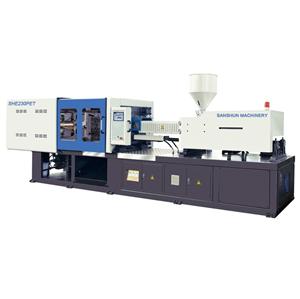- Home
- >
- News & Resources
- >
- Our Blog
- >
- What is Injection Molding and its Process
What is Injection Molding:
Injection Molding is a manufacturing process for producing parts in large volume. It is most typically used in mass-production processes where the same part is being created thousands or even millions of times in succession.
Why Use Injection Molding:
The principal advantage of injection molding is the ability to scale production. Once the initial costs have been paid the price per unit during injection molded manufacturing is extremely low. The price also tends to drop drastically as more parts are produced. Other advantages include the following:
Injection Molding produces low scrap rates relative to traditional manufacturing processes like CNC machining which cut away substantial percentages of an original plastic block or sheet. This however can be a negative relative to additive manufacturing processes like 3D printing that have even lower scrap rates. Note: waste plastic from injection molding manufacturing typically comes consistently from four areas: the sprue, the runners, the gate locations, and any overflow material that leaks out of the part cavity itself (a condition called “flash”).
A sprue is simply the channel that guides molten plastic from the nozzle of the injection molding machine to the entry point for the entire injection mold tool. It is a separate part from the mold tool itself. A runner is a system of channels that meet up with the sprue, typically within or as part of the mold tool, that guides the molten plastic into the part cavities within the mold tool. There are two principal categories of runners (hot and cold). Lastly, the gate is the part of the channel after the runner that leads directly into the part cavity. After an injection mold cycle (typically only seconds long) the entirety of the molten plastic will cool leaving solid plastic in the sprue, runners, gates, part cavities themselves, as well as a little bit of overflow potentially on the edges of the parts (if the seal isn’t 100% right).
Thermoset material, such as an epoxy resin that cures once exposed to air, is a material that cures and would burn after curing if one attempt is made to melt it. Thermoplastic material by contrast, is a plastic material that can be melted, cool and solidify, and then be melted again without burning. With thermoplastic materials the material can be recycled are used again. Sometimes this happens right on the factory floor. They grind up the sprues/runners and any reject parts. Then they add that material back into the raw material that goes into the injection molding press. This material is referred to as "re-grind". Typically, quality control departments will limit the amount of regrind that is allowed to be placed back into the press. (Some performance properties of the plastic can degrade as it is molded over and over). Or, if they have a lot of it, a factory can sell this re-grind to some other factory who can use it. Typically regrind material is used for low-quality parts that don't need high performance properties.
Injection Molding is very repeatable. That is, the second part you produce is going to be practically identical to the first one etc. This is a wonderful characteristic when trying to produce brand consistency and part reliability in high volume production.
What Is The Downside To Injection Molding:
Up-front costs tend to be very high due to design, testing, and tooling requirements. If you are going to produce parts in high volumes you want to make sure you get the design right the first time. That is more complicated than you might think. Getting the design right includes:
Designing and then prototyping the part itself to specification
Initial prototype development is typically completed on a 3D printer and often in a different material (such as ABS plastic) than the final part will be constructed in
Designing an injection mold tool for an initial production round
Typically generating 300-1000 injection molded prototypes in the production material requires the development of an injection mold tool.
Refining any and all details in the injection mold tool prior to mass-production in an injection mold manufacturing plant.
What Are Some of The Considerations For Injection Molding:
Before you endeavour to produce a part via injection molding consider a few of the following things:
Financial Considerations
1. Entry Cost: Preparing a product for injection moulded manufacturing requires a large initial investment. Make sure you understand this crucial point up front.
2. Production Quantity
(1)Determine the number of parts produced at which injection molding becomes the most cost-effective method of manufacturing
(2)Determine the number of parts produced at which you expect to break even on your investment (consider the costs of design, testing, production, assembly, marketing, and distribution as well as the expected price point for sales). Build in a conservative margin.
Design Considerations
1. Part Design: You want to design the part from day one with injection molding in mind. Simplifying geometry and minimizing the number of parts early on will pay dividends down the road.
2. Tool Design: Make sure to design the mold tool to prevent defects during production. Consider gate locations and run simulations using mold flow software like Solid works Plastics.
Production Considerations
1. Cycle Time: Minimize cycle time in as much as it is possible. Using machines with hot runner technology will help as will well-thought-out tooling. Small changes can make a big difference and cutting a few seconds from your cycle time can translate into big savings when you’re producing millions of parts.
2. Assembly: Design your part to minimize assembly. Much of the reason injection molding is done in southeast Asia is the cost of assembling simple parts during an injection molding run. To the extent that you can design assembly out of the process you will save significant money on the cost of labor.







